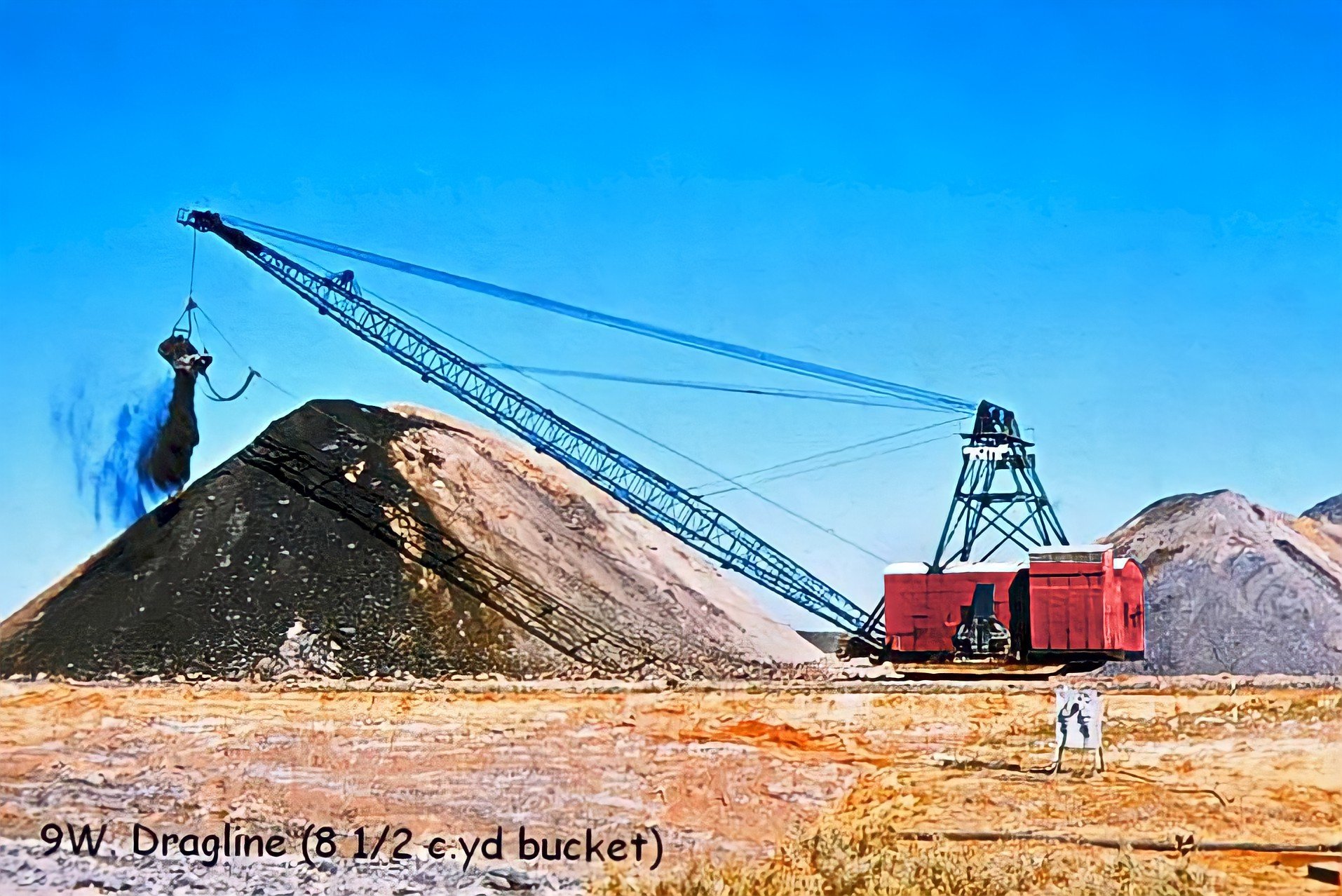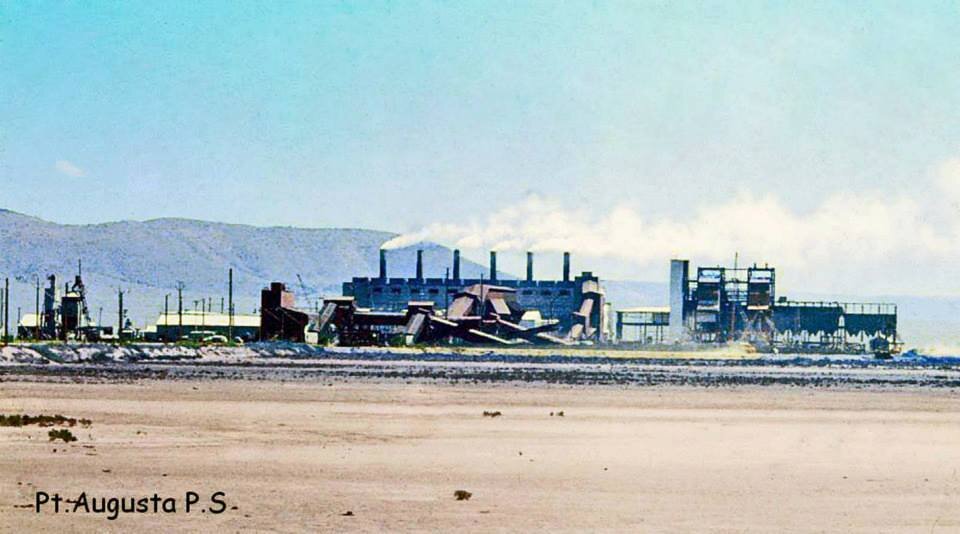Mining in the 1950s
In 1949 Australia experienced the worst coal strike in its history. During the strike increased efforts, and industrial cooperation, at the Leigh Creek mine ensured South Australia coped much better than other states. Three shifts a day, seven days a week prevented factory shutdowns, gas and electricity cuts and large-scale job losses across the State. This effort reinforced the importance of Leigh Creek coal production to the state’s economy and drove ongoing expansion of mining operations throughout the next decade. This expansion included the on-field assembly of the Bucyrus-Erie 9W dragline which was ready for production in 1951 and two smaller Ruston-Bucyrus 5W draglines assembled in 1953 and 1955 respectively. By 1953 drilling exploration of the coalfield was finished and by 1955 most of the major construction work at the coalfield was completed. A lot of the original equipment began to be replaced with introduction rubber wheeled Tourna dozers, electric shovels and inclusion of 25 cubic yard, bottom dumping Euclid wagons into the truck fleet. By the end of the decade mining operations had the capacity to produce one million tons of coal a year and had completely moved from Lobe B to Lobes C and D at North Field, where it would remain for the next 20 years.
Tom Robbins
Coal Production Engineer
1951-1962
Telford East - “K Cut”
Aerial photographs show that scrapping topsoil in preparation of the eastern Telford open cut, known as “K Cut”, started as early as 1950. From the beginning it was known that viable coal deposits at K cut would be mined out within six years. Consequently, in 1957 the open cuts at Telford were abandoned and all mining operations moved to Northfield.
The Shift to Northfield
Once it was established that there were large deposits of coal in Lobes C and D, which could be economically mined using dragline techniques, plans were prepared to develop the northern field to produce the bulk of the coal requirements for the proposed Playford Power Station at Pt Augusta. The plans included installation of new crushing and handling plant, a standard gauge railway loop and workshops at Northfield.
Electricity for the Coalfield
With the introduction of the 9W Dragline a larger power station was required and in 1949 construction began on a steam powered station at Northfield that would burn Leigh Creek coal. This “new” power station was constructed using second hand components including boilers from the Commonwealth Grain Distillery at Wallaroo, the main generator from the old BHP powerhouse at Whyalla and some of the components from the original Telford power house. The Northfield power station was completed in 1950 and stayed operational until 1961 when it was replaced by a 132 kV transmission line that supplied electricity from Pt Augusta.
Bucyrus-Erie 9W - 1950s
The 9W dragline operated at Telford until late 1955 when it walked to Northfield. The 9W, and two smaller 5W Draglines, removed the vast bulk of overburden to expose the coal seams at Northfield. The overburden was removed using a strip and bridge mining method which required draglines to both dig and rehandle overburden. After the coal surface was uncovered shovels dug the coal and loaded it onto trucks to be transported to the crushing plant.
Ruston Bucyrus 100RB
Two 100RB shovels were purchased from the UK in 1949 and 1953 respectively. They were the first electric shovels to operate at the coalfield and with a 3 1/2 cubic yard bucket had almost ten times the capacity of the first Harman shovel. They provided most of the shovelling capacity during the 1950s and remained in service until the 1980s.
100RB Shovel Overhaul - 1952
1951 - Osgood 1006 Long Reach
1953 - Ruston Bucyrus 54RB
1954 - Port Augusta Power Station
The Governor, Sir Robert George, officially opened the Port Augusta Power Station on 23 July 1954. Port Augusta was chosen as the site for the new power station as it was close to the Leigh Creek coalfields and had an abundant water supply. Studies had found that it would be cheaper to transmit power to Adelaide from Port Augusta than to transport coal all the way from Leigh Creek. This was the first South Australian power station to use local fuel exclusively, prior to the discovery of brown coal at Leigh Creek, South Australia had to import its needs from other states.
1956 - 33 Ton Euclid Bottom Dumper
1957 - Loading 1000 Tons an Hour
In 1957, the new standard gauge rail line to Marree opened. This was predominantly for coal to be transferred from the Leigh Creek Coalfields to the Playford Power Station at Pt Augusta. The arrival of the standard gauge rail coincided with the commissioning of a new crushing, screening and loading plant at Northfield. The new plant had capacity to load 1000 tons of coal an hour and introduction of the GM Class Diesel Locomotives allowed transport of much larger quantities of coal to Port Augusta.
1958 - Workshops
The first workshop built at Northfield in the 1950s was in a Bellman aircraft hangar purchased from the Mildura RAAF Base. It was converted into Mechanical workshops in 1958 and remained in service until mining operations returned to Lobe B where new workshops where constructed in 1980.
Telford Workshops in 1952



























































